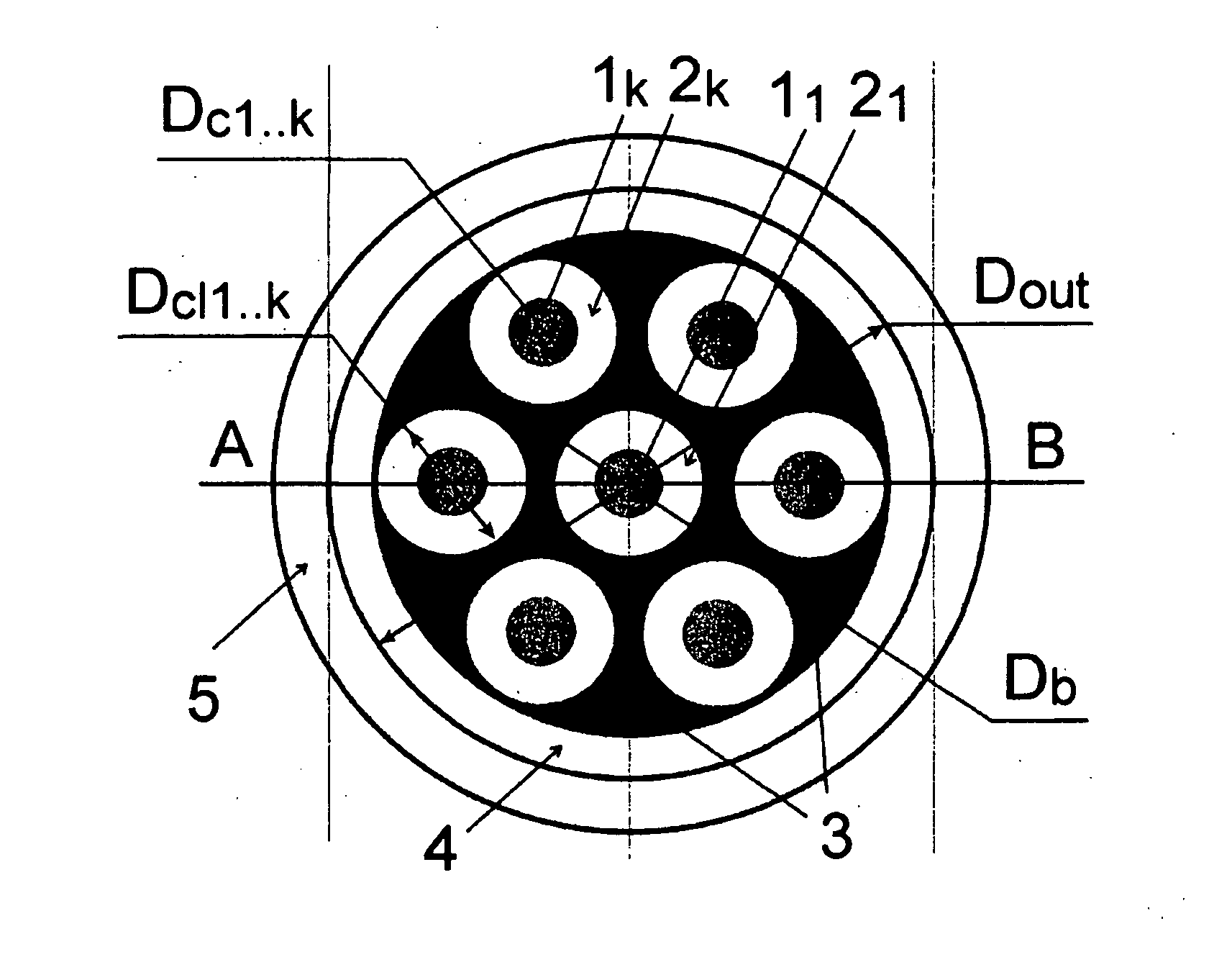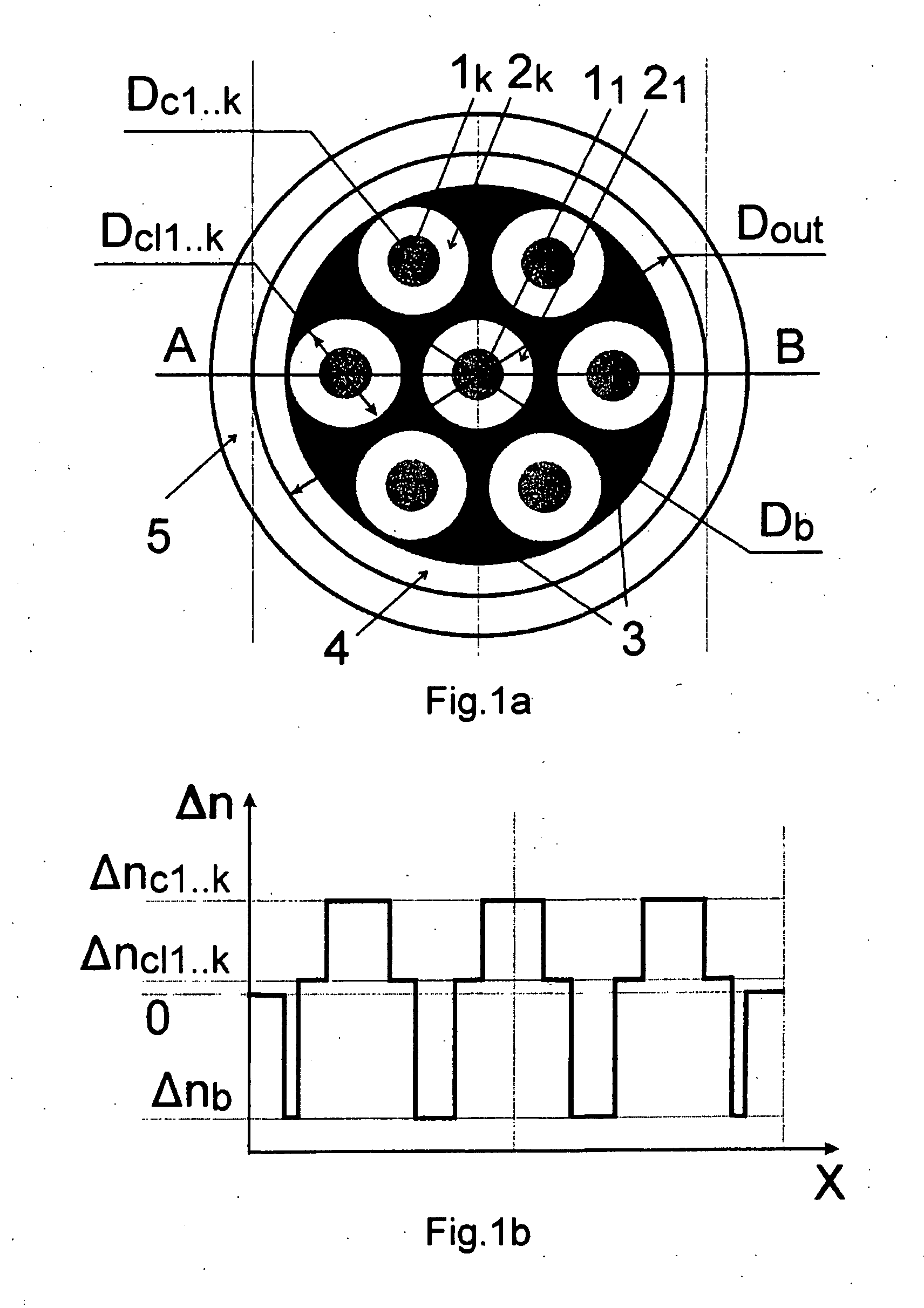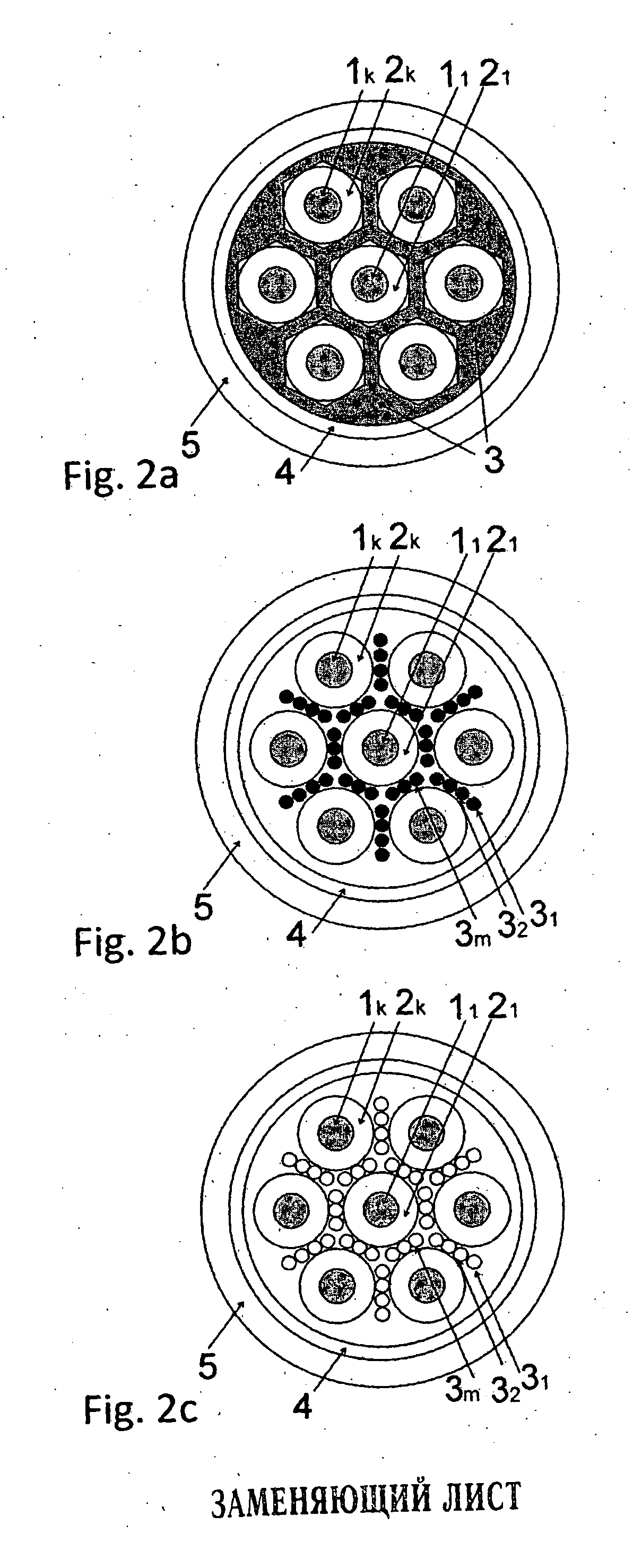Multicore optical fiber (variants)
- Summary
- Abstract
- Description
- Claims
- Application Information
AI Technical Summary
Benefits of technology
Problems solved by technology
Method used
Image
Examples
Embodiment Construction
[0054]A multicore fiber will be described with reference to FIGS. 1a-b and 2.
[0055]FIG. 1 shows a multicore optical fiber comprising at least two light-guiding cores (11 . . . 1k), each of the cores being surrounded by a respective inner reflecting cladding (21 . . . 2k), a barrier region (3), which is defined by the space between the inner reflecting claddings (21 . . . 2k) and an outer cladding (4), as well as an external protective coating (5) of the multicore fiber. The external protective coating (5) is used to prevent mechanical damage to the fiber in operation.
[0056]FIG. 1b shows an exemplary refractive index profile of a multicore fiber according to the invention, where
[0057]Δnc1 . . . k is the difference in the refractive index of each of the light-guiding cores (11 . . . 1k) relative to refractive index no of the outer cladding (4);
[0058]Δncl1 . . . k is the difference in the refractive index of each of said inner reflecting claddings (21 . . . 2k) relative to refractive i...
PUM
 Login to View More
Login to View More Abstract
Description
Claims
Application Information
 Login to View More
Login to View More - R&D
- Intellectual Property
- Life Sciences
- Materials
- Tech Scout
- Unparalleled Data Quality
- Higher Quality Content
- 60% Fewer Hallucinations
Browse by: Latest US Patents, China's latest patents, Technical Efficacy Thesaurus, Application Domain, Technology Topic, Popular Technical Reports.
© 2025 PatSnap. All rights reserved.Legal|Privacy policy|Modern Slavery Act Transparency Statement|Sitemap|About US| Contact US: help@patsnap.com



